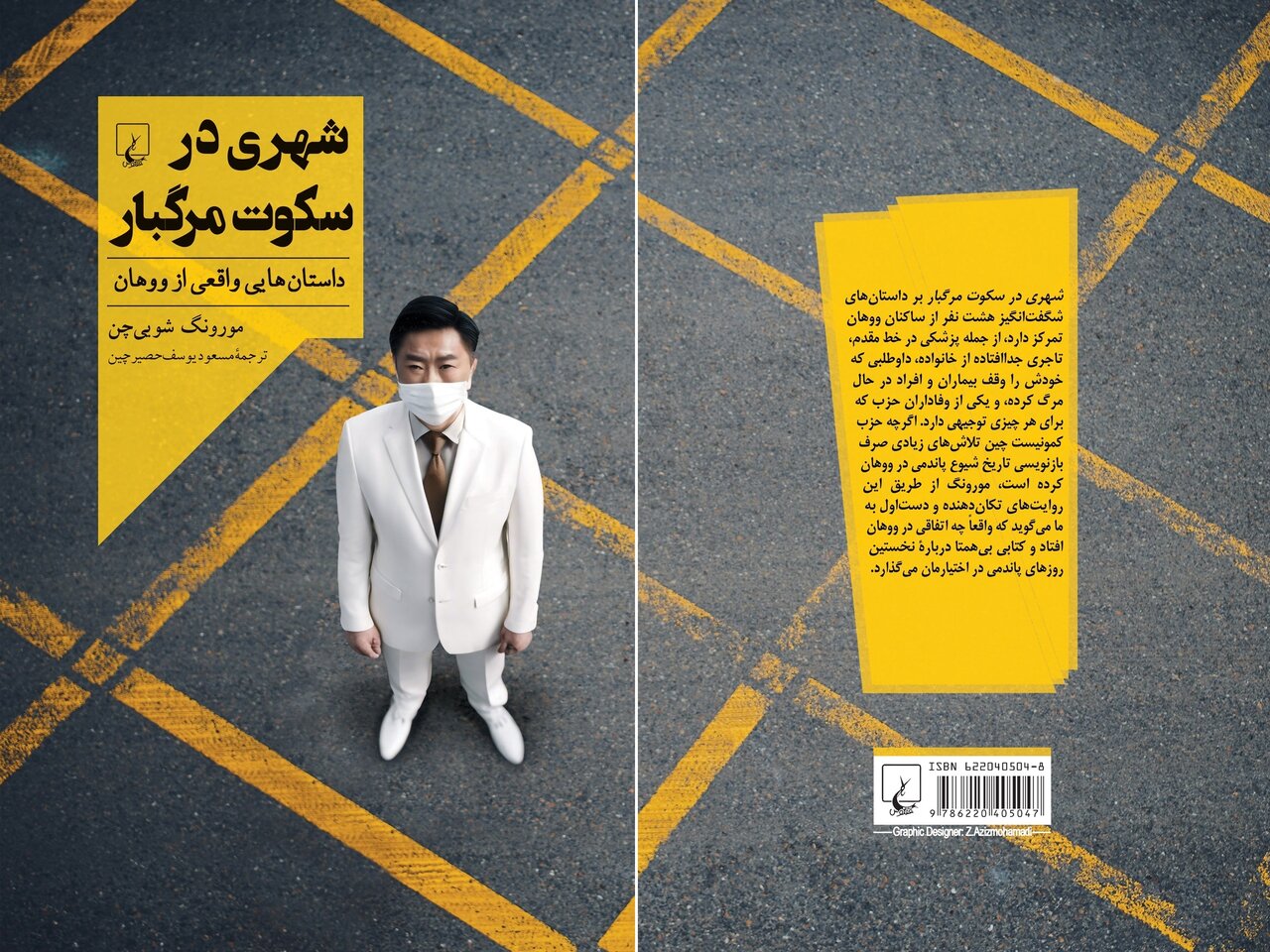Historical record of COVID-19 in Wuhan available in Persian

TEHRAN-The book “Deadly Quiet City: True Stories from Wuhan” written by Murong Xuecun has been released in the Iranian book market.
Translated by Masoud Yusef-Hasirchin, the book has been published in 280 pages by Qoqnoos Publishing Group, Mehr reported.
Originally published in 2022, the book is a harrowing compilation of testimonies from people living in Wuhan, China, during the beginning of COVID-19.
When a strange new virus appeared in the largest city in central China late in 2019, the 11 million people living there were oblivious to what was about to hit them. But rumors of a new disease soon began to spread, mostly from doctors. In no time, lines of sick people were forming at the hospitals. At first, the authorities downplayed medical concerns. Then they locked down the entire city and confined people to their homes.
From Beijing, Murong Xuecun—one of China’s most popular writers, silenced by the regime in 2013 for his outspoken books and New York Times articles—followed the state media fearing the worst. Then, on April 6, 2020, he made his way quietly to Wuhan, determined to look behind the heroic images of sacrifice and victory propagated by the regime to expose the fear, confusion, and suffering of the real people living through the world’s first and harshest COVID-19 lockdown.
“Deadly Quiet City” focuses on the remarkable stories of eight people in Wuhan. They include a doctor at the frontline, a small businessman separated from his family, a volunteer who threw himself into assisting the sick and dying, and a party loyalist who found a reason for everything. Although the Chinese Communist Party has devoted enormous efforts to rewriting the history of the pandemic’s outbreak in Wuhan, through these poignant and beautifully written firsthand accounts, Murong tells us what really happened in Wuhan, giving us a book unlike any other on the earliest days of the pandemic.
the book explores how the totalitarian Chinese government’s “propaganda machine” allowed the emergence of a new virus to become a global pandemic of major consequence. But first, Murong describes his background and explains why he chose to travel to Wuhan when most people wanted to get out. His account of the secrecy and danger involved, should the government become aware of his actions and intentions, makes it clear just how much his subjects risked to tell the truth.
The testimonies are graphic and heartrending. They range from people who were forced to bend to the official narrative, as with a doctor who wasn’t allowed to wear protective gear lest the public learn that the virus existed, to those who were denied care because no official wanted the responsibility of signing off on a hospital transfer, as with a man who died from COVID-19 while caring for his ill wife. Throughout the volume, two common threads emerge: that the Chinese government will go to any length to silence those speaking against its decisions and that their much acclaimed “transparency” and successful handling of the virus aren’t based on fact.
The book’s prose is precise and straightforward. It includes a few metaphors—a spare but effective technique to bring emotions forward, highlighting even more the devastating experiences of the people from Wuhan. This work closes with a timeline of the pandemic compiled by Clive Hamilton, providing further context for the horrifying events described herein.
Murong Xuecun, 50, is the pen name of the Chinese writer Hao Qun. On July 22, 2008, Murong made the long list for the Man Asian Literary Prize. He lives in Australia.
Murong's writing deals mostly with social issues in contemporary China, exploring themes such as corruption, business-government relations, and general disillusionment over modern life. His literature is known for its realist, racy, and fatalist style. Following his rise to fame, Murong has emerged as one of the foremost critics of censorship in China.
SS/SAB
Leave a Comment